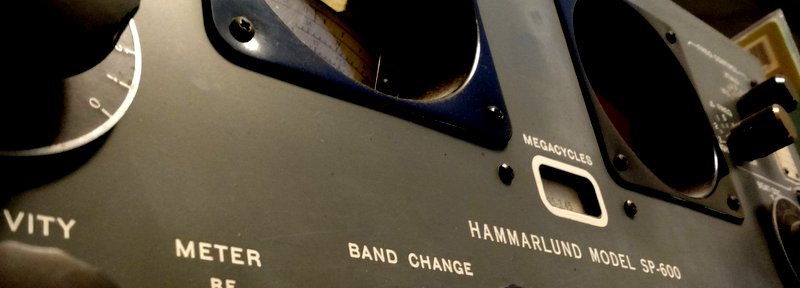 Many thanks to SWLing Post contributor, DanH, who shares the following comment in response to this news article from the Citizen Times featured in Radio Waves yesterday:
Many thanks to SWLing Post contributor, DanH, who shares the following comment in response to this news article from the Citizen Times featured in Radio Waves yesterday:
Here are my thanks to members of the Amateur Radio community and The News-Record & Sentinel for remembering the legacy of Hammarlund Manufacturing Company Incorporated. It is good to know that this part of our radio history is valued and preserved. I loved the newspaper article!
I have a few vintage Hammarlund radios including two Super-Pro models. The SP-600-JX-21 is one of my daily drivers. This relatively late production SP-600 is in stock condition with the exception of a half dozen electrolytic capacitors that I replaced mostly in the power supply. By the time this SP-600 was built in 1957 Hammarlund had replaced the short-lived black beauty electrolytes with ceramic disc capacitors. Like military and industrial users I upgraded the original nickel plated tube shields with IERC heat dissipating tube shields where possible. I also installed vintage GE No. 1847 long-life incandescent bulbs as direct replacements for the brighter (too bright, for me) No. 47 dial lamps.
Here are my two most recent reception videos of the SP-600. The first features reception of Radio National da Amazonia and the second is a brief operating demo of the SP-600. The loudspeaker used in both videos is a full-range vintage Jensen 10? with matching transformer from the 1950’s instead of a communications range speaker typically used with these radios. This makes a big difference when listening to broadcasts.
This old Hammarlund is still working pretty well.
RN da Amazonia
SP-600 operating demo
Wow! Thank you for sharing this, Dan!
I used to own an SP-600 myself and I do miss it. The only reason I sold it is I was struggling to find a spot in my very compact shack where I could keep it on the air as a daily driver, yet still have enough room to bring new radios and accessories into the shack for evaluation. Moving it around all of the time (especially higher on my radio shelves) was incredibly difficult as she’s a hefty girl indeed! I ended up selling the ‘600 to a good friend for a song. That’s okay because like you, I know he’ll keep her in prime operating condition and I can even pop by to visit when I wish! I do miss having the ‘600 in the shack, though. It was truly a champion MW receiver as well!

Dan,
My trick for lower brightness dial lamps was to go to a 12vac incandescent bayonet pilot lamp. Today theres the 1813 14 lamp, which gives a nice soft dial glow. I want to equipped a Heathkit Mohawk with red aviation pilot lamps, which gave a very easy on the eyes effect.
The SP600 has nice smooth tuning mechanisms and good sensitivity and selectivity. The only down side is the weight. takes 2 people to move it to anther table
At 65 lbs. the weight of a rack mount SP-600 is manageable for me alone so I complain about the weight of my R-390A. Neither radio is described as a portable so I don’t consider weight or size to be downsides. I certainly have room to accommodate a SP-600 but don’t advise supporting one on anything sold by Ikea. Hauling a SP-600 up a stepladder unassisted is not recommended.
Thanks Dan, i especially liked the operating demo as the captions elucidated the processes used (such as zero-beating ssb) to bring in the signal.
What a nice tone the speaker gives the AM signal. Shortwave radio broadcasting certainly solves the dearth of interesting content from the local AM/FM in my neck of the California woods!
Thanks, Erik! During the summer I was enjoying over twelve hours of excellent programming every day from RNZI. RNZI wins my prize as the best shortwave broadcaster. The current B20 schedule from RNZI is not very good for California reception. I hear them during our early evenings right now.
My most reliable source for BBC WS is the Kranji (Singapore) relay although Woofferton, Madagascar, and Ascension can also be strong. On the AM broadcast band (MW) all-news KCBS is available to me all day long. After dark I can always rely on other mostly news stations like KNX (Los Angeles) and KOMO (Seattle).
Always enjoy the articles.Been a Han since 1964 , but a radio bug since ww2 when a small kiddo.